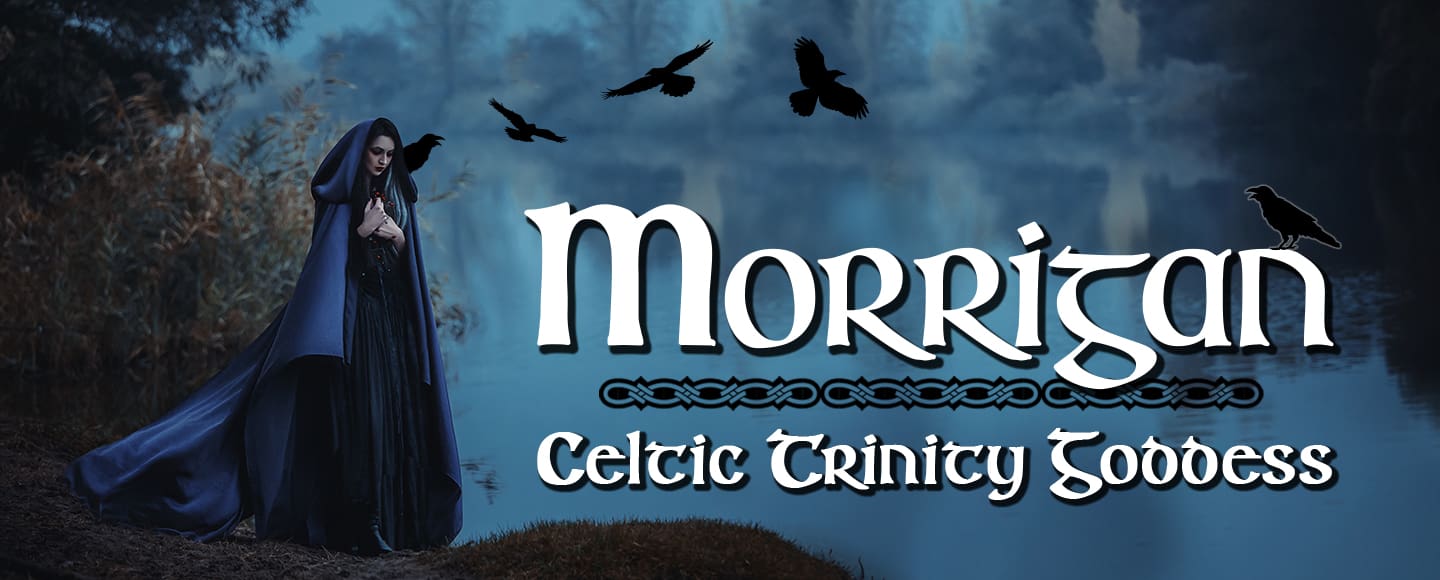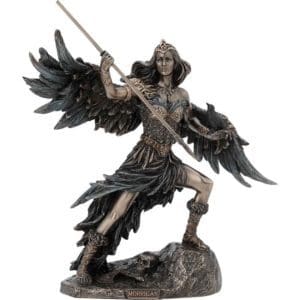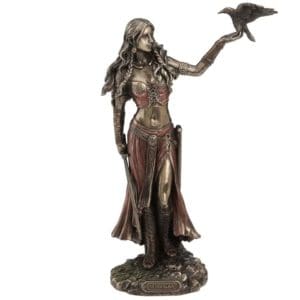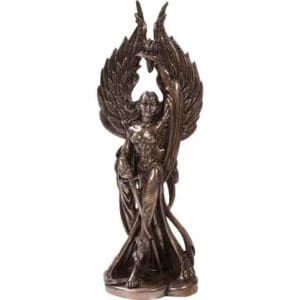The Mythology of the Morrigan

When it comes to Celtic mythology, especially Irish myth, one of the most well-known figures is the Morrigan. This Celtic queen is popular in fiction and neo-pagan worship. Here, Medieval Collectibles hopes to introduce you to the mythology of the Irish Goddess, the Morrigan.
Etymology of Morrigan
The Morrigan is the ‘Great Queen’ or the ‘Phantom Queen’ of Irish myth. These names come from the proto-Celtic etymology for her name. The root word ‘Mor’ relates to the idea of terror or monstrous. A more modern cognate of this word survives in the word ‘nightmare’. Meanwhile the -rigan part of her name means queen. Thus, her name is terror queen, which is very fitting for a goddess of war and fate. The Irish associated her with death or victory in battle as well as foretelling doom. She would do this in the form of a crow, or badb. She would encourage brave deeds and strike fear into the hearts of enemies.
The Depiction of the Morrigan in Mythology
One of Morrigan’s depictions in Irish mythology features her as a triple goddess, usually as a trio of sisters. The sisters were usually Badb, Macha, and Nemain. However, Anand would sometimes replace Nemain. Her associations and depiction as a triple goddess and foreteller of death have given the Morrigan additional associated figures. The mythical banshee of later folklore has a similar role of foretelling death. Another mythical figure is that of the ‘washer at the ford’. This washer was either a young female or an old crone washing blood red clothes in a river ford. Regardless of the age of the figure, seeing it was considered an omen of death. The Morrigan would often take the role of the washer woman.
The Morrigan features in the Ulster Cycle, a series of medieval Irish heroic legends. In these myths, she foretells the death of the hero Cuchulainn. In one version, she foretells his death as the washer woman mentioned previously.
The Joining of the Dagda & the Morrigan
The Morrigan’s husband is the Dagda. According to the Cath Maige Tuired, they had a carnal joining prior to a battle. At Samhain festivals, this myth had a prominent role. The idea was that if the two successfully joined, then the Celtic tribes could expect a fertile and prosperous coming year. Samhain for the Celts was the end of the old year and the beginning of the new.
We have explored the mythology of this mighty Irish warrior goddess, the Morrigan. Hopefully, you now know more about this Phantom Queen and the interpretations of her appearance. As a goddess of war and fate, she was a powerful icon for the Celts.









